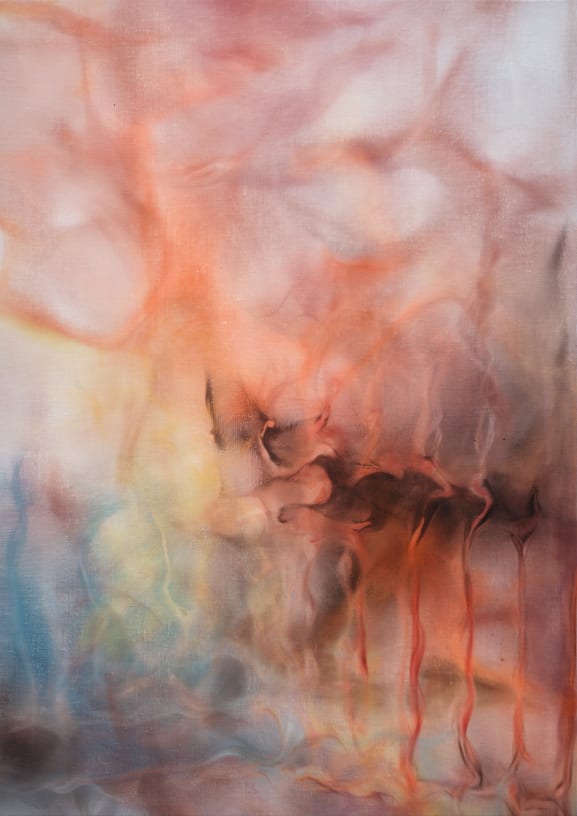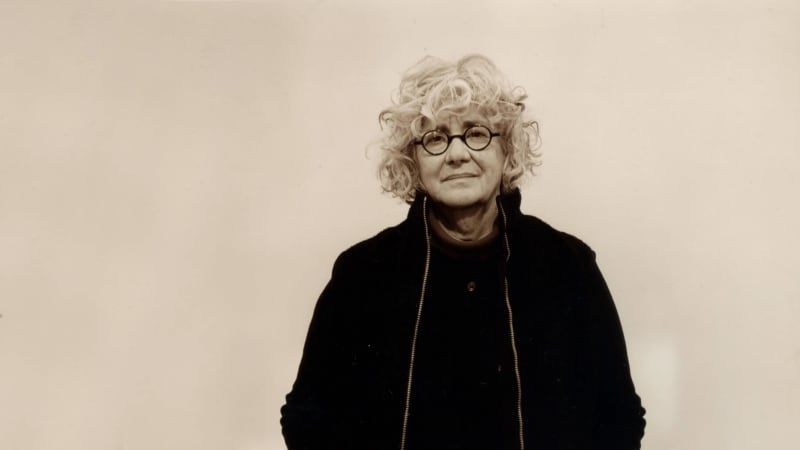Artist Zadie Xa explores identity in her Korean folklore-inspired installations Feminism, diaspora and the afterlife . (This link opens in a new tab).
By Aaina Bhargava. (This link opens in a new tab)..
On the occasion of her Whitechapel Gallery exhibition, the Korean-Canadian artist talks to Tatler about feminine power, death, mourning, and hybrid identities
For the past few years, Korean Canadian artist Zadie Xa has been exploring the afterlife through her art. “I think the main reason for this is because of the Covid [situation] we’re currently living in,” says Xa upon reflection. “We haven’t had a chance to fully acknowledge what’s happened or mourn properly.” Death, grief and remembrance have been occupying her mind and consequently materialising in her work.
Shrines, shamans and characters adapted from Korean folklore find themselves centre stage at Xa’s exhibition House Gods, Animal Guides and Five Ways 2 Forgiveness at Whitechapel Gallery in London, a show that reflects on the loss and upheaval experienced during the pandemic. It opened to the public on September 20, a day after Queen Elizabeth II’s historic funeral, an outcome that isn’t lost on Xa.
“It’s so weird; believe me, I know,” says the artist, standing in the ground-level gallery where her work is on view; a room that used to be the Whitechapel library. “It’s been a strange atmosphere these past few days.”
Founded in 1901, Whitechapel Gallery was established to bring great art from around the world to the people of east London. Now the institution is internationally renowned for staging critically acclaimed contemporary art exhibitions and extensive public programming. Xa was invited by the gallery’s curator Laura Smith to create a show in one of the gallery spaces. For Xa, the space’s history evoked ideas of ghosts and lent itself to a show that traces past presences. The sentiments associated with the high-profile death flood into the gallery, adding to those in the works of the artist, to whom the room—which while high-ceilinged, enjoys minimal natural light—felt like a crypt. The initial idea for the show came from thinking of the room as a liminal space; “a journey into a dreamscape, the underworld or to death”, as the artist puts it.
Xa’s personal experience of loss is represented by two puppets modelled after her dogs, hanging from the ceiling near the gallery entrance. The one on the left is her French bulldog Chicho, who died of cancer in 2018; the one on the right is Fizzgigmo, her current pet.
The act of commemoration is further manifested in Grandmothers (2022), a jacket made from an assortment of bright, silky fabrics. Upon closer inspection, stitched-on flowers and letters spelling out the exhibition’s title adorn the garment, a gesture akin to the act of leaving flowers and offerings at a shrine, and one which resonated particularly strongly at the time of the exhibition’s opening given the Queen’s recent death.
Just as that event saw people mourning a strong matriarch while also raising conversations around her representation of colonial legacies, Xa’s work champions female empowerment but is also critical of colonial legacies; specifically of how they allowed for the repression of cultural identity.
The inspiration behind Grandmother, for example, is a poem, Wonder Woman, by Asian American writer Genny Lim, which speaks to and about immigrant women in the US. For Xa, this work is a shrine of sorts to those who were recent victims of Asian hate-related violence. The artist has lived in London for 10 years, so didn’t witness or experience the sorts of specific racist attacks that took place in the early days of the pandemic, but reading about them struck a chord. “You tend to get really emotional; it’s really hurtful to see the most vulnerable in society experiencing it [racial violence], so I wanted to create this small vigil for them,” she says.
Beyond remembrance, Grandmother evokes a sense of nostalgia; the DIY aesthetic is reminiscent of denim jackets worn by those growing up in the late 1990s or early 2000s, upon which letters, badges and other emblems were sewn and customised to the owner’s liking. While Xa’s shrine jackets aren’t directly inspired by them, the conception of her colourful, patchwork-like signature aesthetic is partially informed by her teenage years, primarily from streetwear fashion and snow/skateboard culture. “When you’re young, you want to show who you are,” she says of the DIY aesthetic. “The idea [of the piece] is about constructing an identity.”
More recently, Xa uses assemblage—specifically Korean patchwork—as way to showcase that identity construction. Her heritage is also one of many influences on her aesthetic, which is inspired by jogakbo and bojagi, the former a style of patchwork which involves the use of leftover fabric to create the latter, a cloth used to wrap gifts and other objects. It’s become symbolic of a hybridity that’s present throughout her body of work. “On a superficial level, that’s what hybridity is: you grab disparate pieces of information and put them together. We are made of many things; [assemblage is] a way to transcribe, digest and show a reflection of how those things are.”
“Patchwork” is also a fitting metaphor for Xa, for whom, having grown up in Vancouver as a diasporic Korean, navigating multiple identities and recognising cultural complexities is second nature. There’s infinitely more to her experience than simply being a child of immigrant parents and growing up in a different country than that of their birth. The artist uses these references to construct her own narratives by piecing together different perspectives, materials and sources. “I’m interested in storytelling, deconstructing and analysing mythology and children’s folktales,” she explains. “It becomes a [channel] by which I’m able to speak to other things which I see within the current political situation.
“Within [the fact of] being from Canada is this whole complex weaving of colonialism and subjugation of indigenous people, with an influx of immigrants who prosper, as well as those who are persecuted. Then there is the complication with the internet and proliferation of social media that have different cultural influences on immigrant children,” she says of the intricacies of hybrid identities.
The Whitechapel show uses funerary customs and the idea of veneration to highlight the importance of acknowledging those who came before you. In Xa’s case, this extends beyond paying tribute to her ancestors to recognising Canada’s colonial history and the negligence and discrimination faced by its indigenous population. “How can I, as a non-indigenous Canadian person, think about these histories and acknowledge them, and work towards some kind of reconciliation?” says Xa. “It’s important to make sure there’s proper deference paid so there’s a future prosperity that’s given.”
The answer, she believes, lies in revealing and sharing as many perspectives and tellings of those histories as possible, especially those which have been overlooked and are less visible. “When you live in a place where you are not of the majority, it’s important to interject different stories into the mainstream—it’s an act of resistance.”
The ambiguous character of these hybrid identities ties them into the theme of death and spirits that underpins her show: both involve transition and impermanence. Xa draws from her cultural hybridity, Korean folklore—specifically shamanism—to explore this liminality.
When Xa first encountered an image of a Korean shaman and understood their role in society, their rebellious spirit resonated with her. Existing on the peripheries of mainstream culture, shamanism was considered a dark, alternative practice. “They were very anti-systemic; there’s the pursuit to follow your calling and, as a carrier of knowledge and culture, to keep going in the face of persecution and oppression. For artists, there’s a kinship and recognition in that.”
The exhibition reflects her respect for this group from the moment you enter: a large cloak which loosely resembles a shaman’s robe is suspended from the ceiling at the entrance. Knives—both an emblem of domesticity and a prop in a ritual dance which indicates the presence of spirits—kimchi and flowers adorn the vibrant and multicoloured textile piece, as do symbols of the artist’s own creation which mirror the symbols chosen by shamans to signify their power. For Xa, these symbols are meant to “invite power”, something shamans were believed to be capable of doing.
The robe represents Princess Bari, a Korean shamanic deity and the most prominent character in the show. She appears three times on a large mural Xa painted inside the installation’s main structure which the artist describes as a cross between a hanok—a traditional Korean house—and a funerary pyre. Bari’s role in Korean shamanism is vast, and varies between different interpretations, one of which is the harbinger of death. “The grim reaper appears when someone is about to die, as does Princess Bari,” says Xa. “She guides souls into the afterlife—and viewers through the exhibition.”
Along with Bari, several spiritual or religious rituals are referenced throughout the show, most visibly in composite animal-funerary object form, such as the two dog-like creatures flanking the robe. Xa’s aforementioned pets function as haete: scaled, goat-like Korean mythological creatures, who, as the artist explains, “were believed to know right from wrong, and helped pass judgement on guilty and innocent parties”. As fables often use animals to teach moral lessons about humanity, Xa interweaves animal avatars throughout her artworks to “talk about morality and provide a distance from which we can look at ourselves and the human condition, and be critical of society”.
The robe represents Princess Bari, a Korean shamanic deity and the most prominent character in the show. She appears three times on a large mural Xa painted inside the installation’s main structure which the artist describes as a cross between a hanok—a traditional Korean house—and a funerary pyre. Bari’s role in Korean shamanism is vast, and varies between different interpretations, one of which is the harbinger of death. “The grim reaper appears when someone is about to die, as does Princess Bari,” says Xa. “She guides souls into the afterlife—and viewers through the exhibition.”
Along with Bari, several spiritual or religious rituals are referenced throughout the show, most visibly in composite animal-funerary object form, such as the two dog-like creatures flanking the robe. Xa’s aforementioned pets function as haete: scaled, goat-like Korean mythological creatures, who, as the artist explains, “were believed to know right from wrong, and helped pass judgement on guilty and innocent parties”. As fables often use animals to teach moral lessons about humanity, Xa interweaves animal avatars throughout her artworks to “talk about morality and provide a distance from which we can look at ourselves and the human condition, and be critical of society”.
A huge tourist destination, Jeju is lesser known for its history as a Korean shamanic centre, one led by the matriarchy. It was a once a normalised practice that was suppressed by Japanese colonists’ policies, as it highlighted a distinctly Korean identity, and was deemed primitive and “too Korean”.
Here again, the suppression of certain voices, particularly those silenced in colonial and mainstream retellings of histories, whether they are female, shaman or considered alternative, plays a significant role for Xa. The construction of art, drawing from multiple materials and sources, serves not only as a way for her to navigate her own cultural identity, but also as an act to remember forgotten stories.
For Xa, the reason to remember these stories is not only deference or respect; “it’s the re-remembering that’s important because it’s a defiance of modernisation tied to westernisation and colonial thought. It’s important to recentre that focus on something else.”










































































































































































